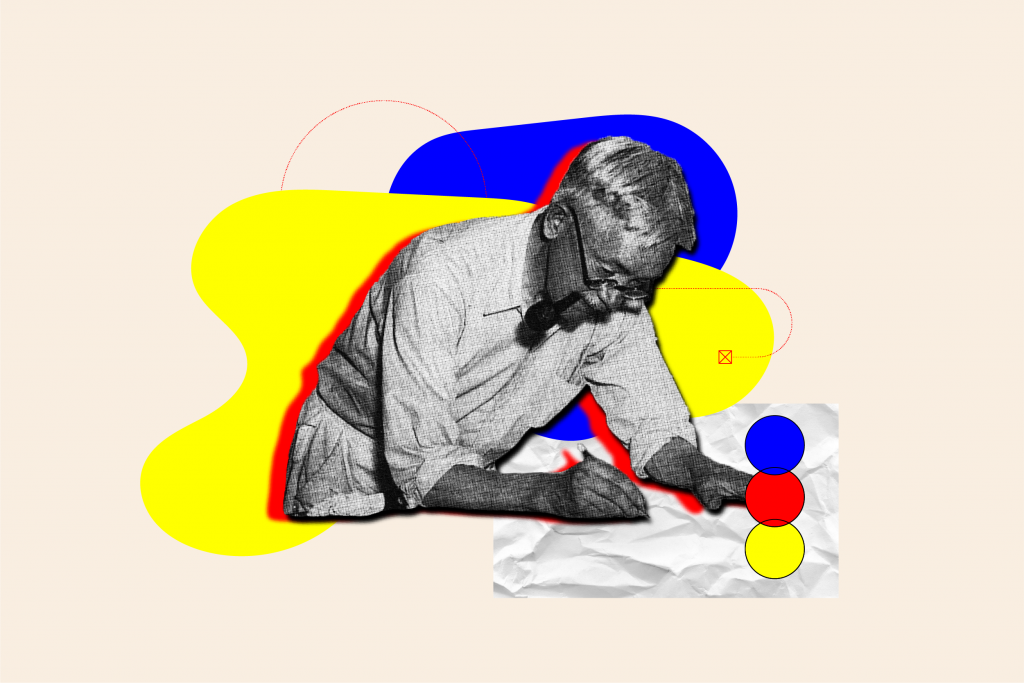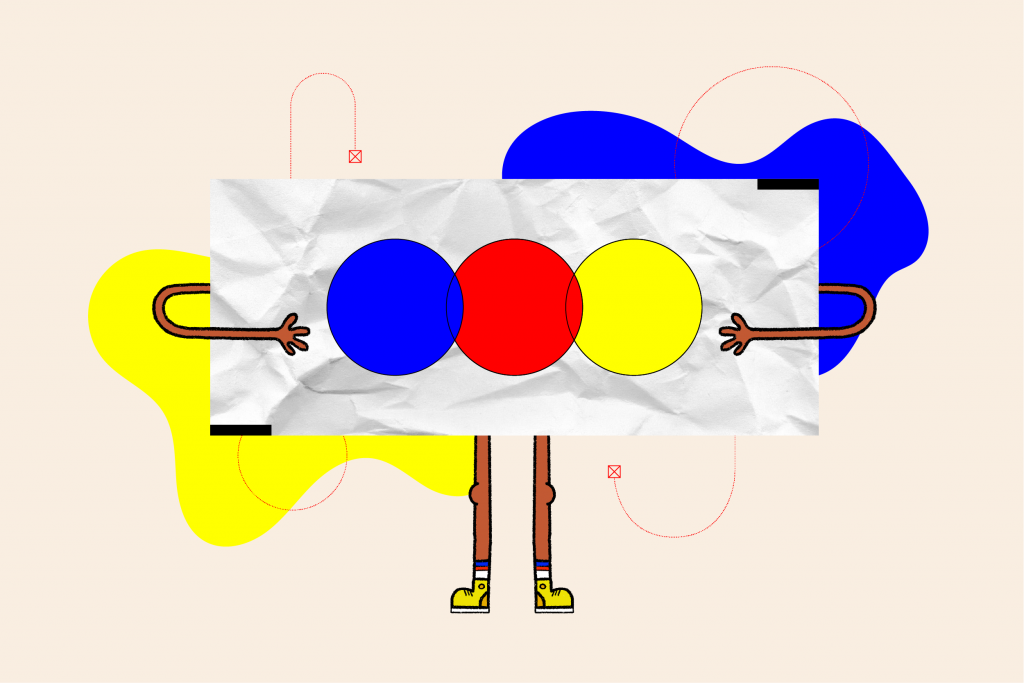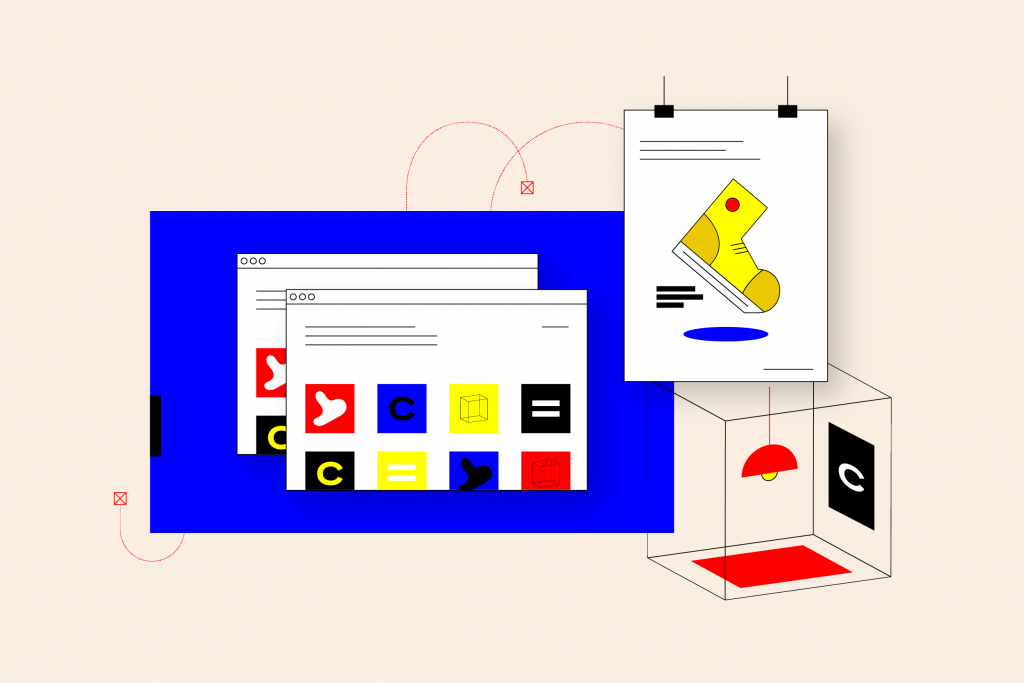Graphic design is really just art applied to a specific purpose. It involves a systematic and creative plan to achieve certain objectives or solve a problem with the use of pictures, visual images, symbols, even words. It is the visual communication and aesthetic expression of specific ideas and concepts using a variety of elements and tools. It’s almost impossible to imagine a world without it.
If you make a vibrant poster, create a business logo, type a letter, or even make a computer printout, then you’re using a type of visual communication known as graphic design. To fully understand the concept, you need to begin with a sound understanding of the elements that go into it. But let’s look back first, at graphic design’s importance in the context of its history.

History of Graphic Design
The term graphic design was coined by American type designer and calligrapher William Dwiggins in 1922, but graphic design was hardly new at the time. It dates as far back as approximately 16,000 years to the ancient cave paintings. Scenes of the hunt depicted in the early cave drawings might have been more than just decorative, serving a number of purposes. One was to literally describe these animals as an instruction manual or field guide might, showing what to chase and what to avoid. Another likely purpose might have been to bring some good fortune by symbolically and artistically capturing the animals on the walls. Often made with just colored pigments and burnt sticks, these beautifully and skillfully executed designs motivated hunting groups and helped them survive.
Graphic design first emerged as a profession in the late 19th century. This was partly due to job specialization, and partly due to the new commercial possibilities brought about by the Industrial Revolution.
And though electronic media and digital printing have replaced cave wall paintings, woodcuts and mosaics, the important functional aspects of graphic design are the same: to educate, inform, symbolize, and compel people to take action.
Elements of Graphic Design
Elements of graphic design are the fundamental units that make up a visual image. These include line, space, balance, color, scale, and shape, among others. They are the building blocks of graphic design.

Line
Line refers to the continuous movement of a point along a surface. In graphic design, lines may be used for a range of purposes, such as connecting content, stressing a word or phrase, or creating patterns. Lines are often used to divide a layout or connect various elements. More than mere dividers, lines are used by designers to convey movement and emotion, effectively tying together their composition to make it look professional and polished.
Color
Colors are used to stimulate emotions and create moods. The three primary colors are yellow, red, and blue—you can mix them in varying ratios in order to produce intermediate and secondary colors. Harmonious colors tend to bring unity to a graphic layout. On the other hand, contrasting colors will create drama.
Color has three important qualities—hue, contrast, and saturation. Hue is basically just another word for color. Contrast refers to the difference between elements in a graphic. Finally, saturation refers to the intensity of the color.
Shape
In design, creative use of shape sustains a reader’s interest. Shape could also help organize a page by neatly separating items while making the layout simpler to follow. Shapes are enclosed objects delineated by line or color. We can categorize shapes as organic (natural shapes), abstract, geometric, feminine, and masculine.
Consider both the shapes you are intentionally incorporating (called positive shapes), and the shapes naturally formed around or near those shapes (called negative shapes). Ultimately, both positive and negative shapes have significant effect on your design.
Texture
Texture is the surface look of an object. It’s created by varying light and dark areas. We can consider texture in two main ways—the physical texture is often provided by the smoothness or coarseness of the paper. In contrast, visual texture is the pattern found in images, like the pattern of tree bark in a photo. The use of texture in graphic design helps add depth and visual interest. You can apply it graphically in the form of pattern or through the choice of printable surface.
Space
Space is the region or area around the various elements in a design. You can also use it to separate or group information. Use space effectively and skillfully to give the eye rest, emphasize importance, and lead the viewer in the desired direction. Consider not just the design elements you are including (like images and text), but how they are arranged and grouped in your composition.
Remember negative shapes from above? That same “negative” concept also comes into play regarding space. Although we understand that it can be tempting to fill each and every inch of the digital canvas with something, design elements usually need a little room to breathe with negative space.

Where and Why Graphic Design is Used
Graphic design is everywhere, from candy bar wrappers to the logo on your favorite t-shirt or coffee mug. It’s a crucial component in the marketing world as it builds brand awareness and influences the customer’s decision-making process.
Advertising Design
Advertising graphic design involves creating and organizing the visual artwork that is used in advertisements for services and products. Art directors and creative directors are responsible for projects as small as a minor brochure or a business card, and projects as large as an entire advertising campaign.
Environmental Graphic Design
Environmental graphic design includes visual elements used in various environments, like on highways or at a museum. One example is a graphic used to communicate safety information, like a stop sign. Combining graphic, interior, architectural, landscape, and industrial design, allows environmental designers to improve a person’s experience. One of the core purposes of environmental design is way finding, which includes visual cues or signage in order to indicate where people are and where they should go.
Web Design
Your website is your best salesperson. Excellent website design will help you attract potential customers and improve sales. Choosing images, page layout, and typography for a site are all key parts of web design. A professional graphic designer will help your company design a user-friendly, fluid, and aesthetically-pleasing site for your company.
Also, note that web design ties very closely with user experience (UX) design and user interface (UI) design, and helps create an interface that balances optimal usability with the aesthetic appeal on the front page.
Corporate Design
Every business has a unique story to tell. Organizations use corporate design to express the relationship between their brand and their audience. Also, the various visual elements of a brand identity often act as the company’s face to communicate its tone, essence, and personality. Some examples of corporate graphic design include logo design and business newsletters.
For example, take the logo for automotive company Mercedes-Benz. The three-pointed star is a timeless classic, but not everyone knows what it represents. The three prongs represent air, land, and sea—three distinct areas within which Mercedes strives for engineering excellence. The sleek, gray design represents dependability, security, and quality.
The Future of Graphic Design
Graphic design is a dynamic and ever-changing industry. In the past five years, we have seen massive changes. The advent of the digital revolution sent the conventional graphic design industry into a frenzy, allowing for better and more effective expression of ideas on several digital platforms.
It is also projected that within the next couple of years, the majority of graphic design work will be done by an increasing base of freelancers. The outlook for graphic design is that most organizations will outsource their design needs to freelancers on platforms that streamline the process with great benefits for both parties. On the other end of the spectrum, however, there will also be a greater appreciation for original designs that require more thought due to their ability to stand out louder amongst the noise.
In addition, graphic design is expected to play a more important role in 3D technologies, such as augmented reality and virtual reality. Graphic design is destined to become a key player in 3D printing, as well.
One of the most popular trends in the graphic design industry, responsive design adjusts itself depending on the screen size and shape of the smartphone, tablet, or desktop. The future is likely to take the “responsive design” game to the next level, creating fluid designs that not just fulfill the main purpose of fitting the screen shape and size, but also cater to the viewer’s mood and emotions.



